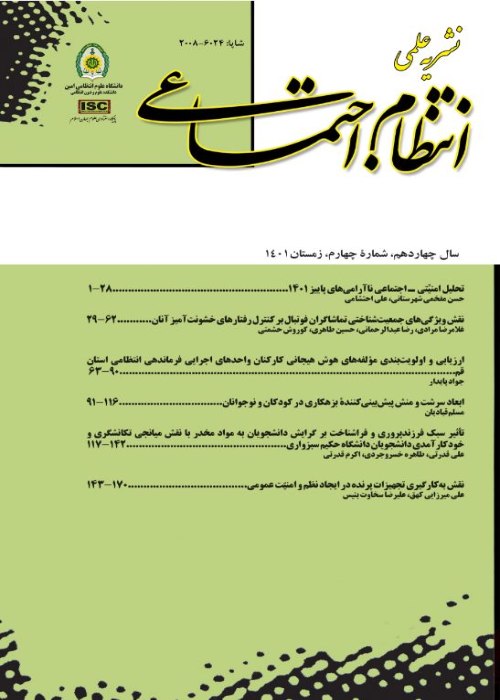Analysis of Socio-Cultural Barriers to the Implementation of Restorative Justice in Isfahan Province
Proper restorative justice can play an effective role in preventing recurrence of crime and increasing social security. The effectiveness of the envisaged restorative justice measures requires cultural and social infrastructure. Therefore, the purpose of this study is to identify social and cultural barriers to the implementation of restorative justice in Isfahan province.
In terms of its objectives the present study is of an applied research type and in terms of its nature it is considered as descriptive-analytical. The data were collected using a researcher-made questionnaire with a five-point Likert scale. The validity of the research was confirmed using construct and face validity the reliability of each of the studied concepts was calculated through Cronbach's alpha coefficient. The sample size was set as 359 individuals using quota sampling method appropriate to the statistical population of officers and judicial officials of the Isfahan Prosecutor's Office and Court and based on the Cochran's formula. The research data were described using frequency distribution, relative percentage and mean; and after Kolmogorov-Smirnov normality test, the data were analyzed by non-parametric tests (Kruskal-Wallis, Pearson correlation).
Based on the descriptive findings, the average attitudes of officers, prosecutors and court judges towards the implementation of restorative justice in the range of 1-5 were 3.28, 2.94, and 2.75, respectively. On the other hand, the average social barriers among them in the range of 1-4 were 3.10, 2.38, and 2.89, respectively, and the average cultural barriers among them in the range of 1-4 were 2.63, 2.77, and 2.249. In other words, despite the moderate attitude towards the implementation of restorative justice, social and cultural barriers to its implementation are somewhat above average among respondents. Also, based on analytical findings, younger prosecutors and officers familiar with criminal procedure have a more positive view towards restorative justice.
The greater the social and cultural barriers of officers, the more negative their attitude towards the administration of restorative justice. According to court judges, with the increase of social barriers, the administration of restorative justice decreases, and finally, the lack of necessary training for judges of the judiciary make their attitude towards the restoration of restorative justice more negative.
- حق عضویت دریافتی صرف حمایت از نشریات عضو و نگهداری، تکمیل و توسعه مگیران میشود.
- پرداخت حق اشتراک و دانلود مقالات اجازه بازنشر آن در سایر رسانههای چاپی و دیجیتال را به کاربر نمیدهد.



